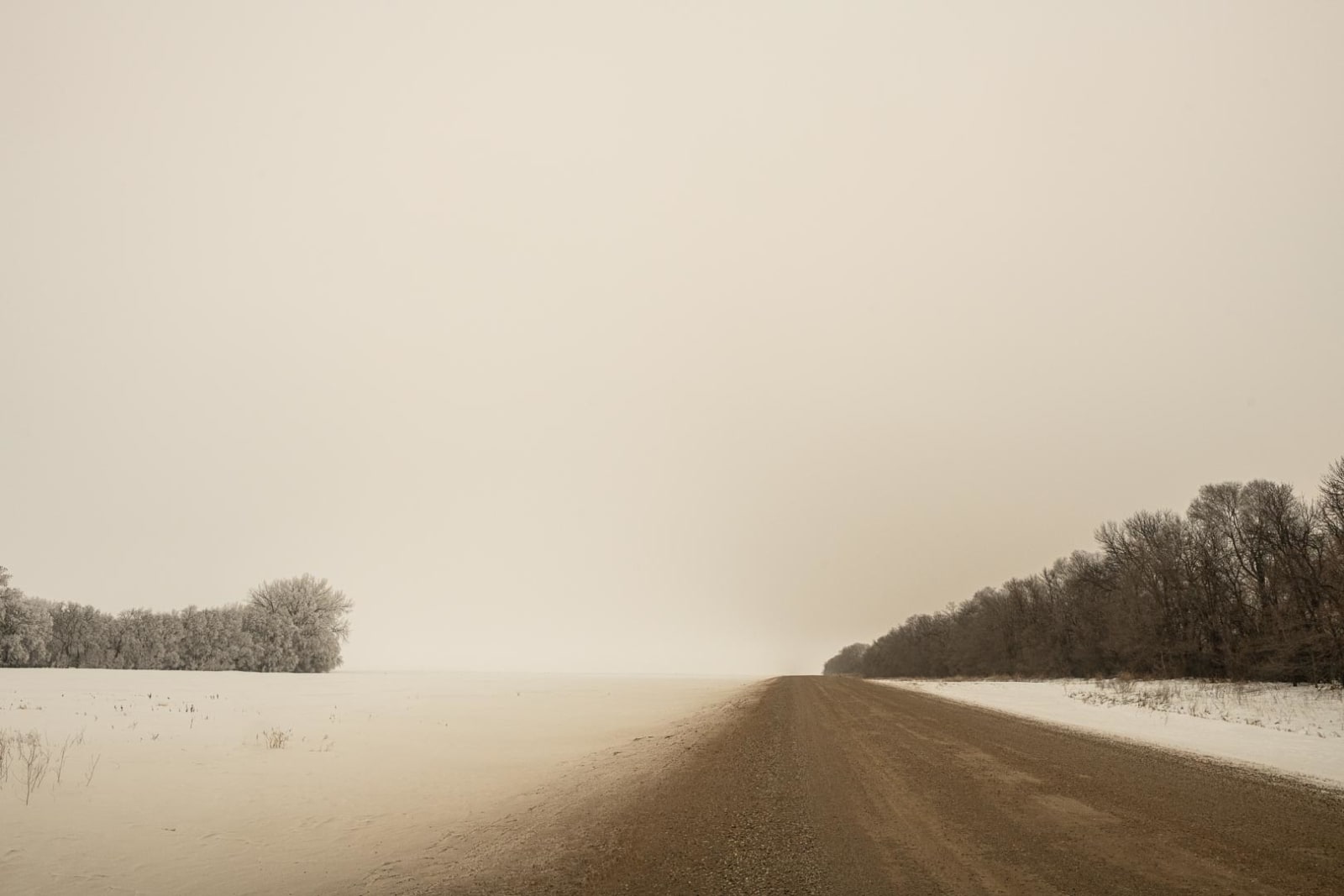
Todd Hido American, b. 1968
.
20 x 30 in / 50.8 x 76.2 cm
.
Edition of 5 + 1 AP
30 x 45 in / 76.2 x 114.3 cm
.
Edition of 3 + 2 AP
38 x 57 in / 96.5 x 144.8 cm
.
Edition of 1 + 1 AP NFS
59 1/2 x 88 1/2 in / 151.1 x 224.8 cm
.
Todd Hido’s 12005-4661, 2019 opens like a held breath.
A winter road recedes to a vanishing point, a gauze of frost muting everything that might otherwise clamor for attention. The scene is almost monochrome, but not quite: the snow carries a faint, tea-stained warmth, and the sky is a pale, enveloping veil. A ribbon of gravel cleaves the composition, its rough, earthen texture an insistence on the material world against the vast blankness surrounding it. On either side, trees stand like smudged graphite along the margin of a notebook—quiet witnesses, rimed with ice, refusing drama.
Hido’s photograph is less a landscape than a state of mind. The horizon dissolves rather than divides, turning the distance into a soft erasure where the road’s intention falters. It is a place that seems to remember movement after the car has passed, retaining the warmth of its engine only in the memory of tire tracks. That lingering absence is the subject: a presence defined by what has just left, or has not yet arrived.
Light here is weather rather than illumination. It suppresses detail, asking the eye to lean forward, to search the haze for edges that keep slipping away. The tonal restraint slows perception, inviting a longer look, a quieter kind of attention. In that slowness, the photograph becomes a meditation on direction. The right edge of the frame carries the weight of the road and the dark line of trees; the left opens into sheer, breathy expanse. Between them hangs a question: to proceed along the known margin, or to step into the blank.
What might be sentimental in lesser hands is stern in Hido’s. The image resists narrative while leaving the door ajar for it. Winter is not an emblem of loss but a plane of possibility. The road implies a traveler. The traveler is both you and no one. The scene is both Midwest and nowhere, a geography of feeling with a map made of restraint.
Stand before the photograph and the soundscape becomes audible: the muted hiss of wind across ice, the granular rasp of gravel, the silence that follows when all motion stops. It is a portrait of threshold—of the mind in winter, of the hour before a decision is made—where the world is pared down to sky, earth, and a line drawing you into the white.